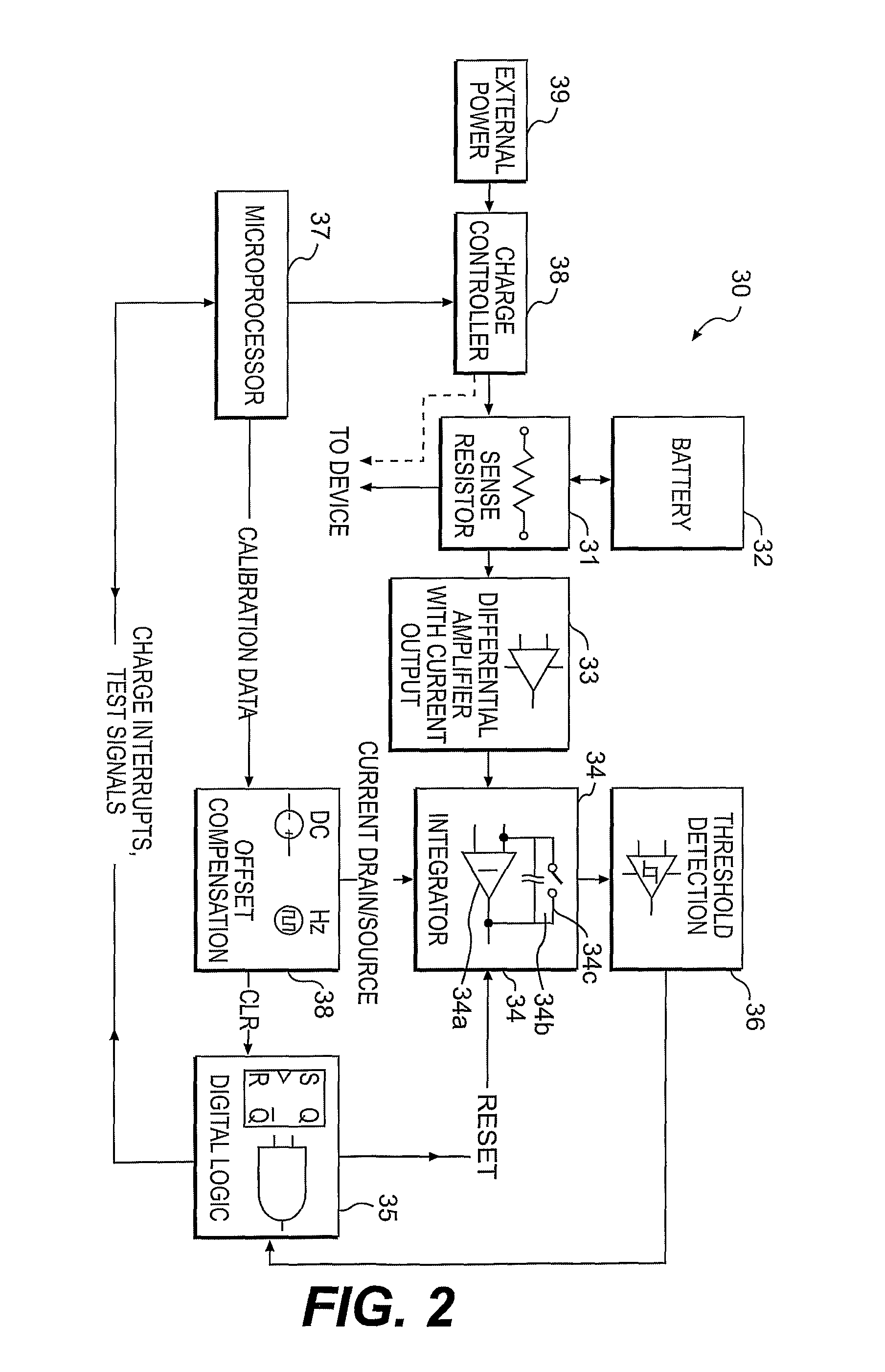Battery Characterization Technique
a battery and characterization technology, applied in secondary cell servicing/maintenance, instruments, therapy, etc., can solve the problems of damage to surrounding tissue, loss of recharging, and inability to meet the requirements of recharging, so as to reduce current flow
- Summary
- Abstract
- Description
- Claims
- Application Information
AI Technical Summary
Benefits of technology
Problems solved by technology
Method used
Image
Examples
Embodiment Construction
[0030]A starting point in developing a charge management regime for a rechargeable battery is to determine a method to measurably characterize the battery. This normally involves determining the remaining charge capacity in the battery, which can be ascertained in a number of ways. As earlier mentioned, the voltage of the battery can be used, in which case a measurement is regularly taken and an algorithm is implemented that attempts to estimate the amount of useful energy stored in the battery, and therefore may approximate the time remaining until the battery must be recharged.
[0031]However, such voltage-based calculations do not take into account the fact that the voltage depends on the chemistry, the current state the chemistry is in, i.e., ageing, the state of charge, and both, the load and the duration of load connection. Fading results in a reduced capacity, i.e., less charge can be stored in and retrieved from the battery. Ideally, a charge management algorithm using this vo...
PUM
| Property | Measurement | Unit |
|---|---|---|
| voltage | aaaaa | aaaaa |
| current | aaaaa | aaaaa |
| voltage | aaaaa | aaaaa |
Abstract
Description
Claims
Application Information
 Login to View More
Login to View More - R&D
- Intellectual Property
- Life Sciences
- Materials
- Tech Scout
- Unparalleled Data Quality
- Higher Quality Content
- 60% Fewer Hallucinations
Browse by: Latest US Patents, China's latest patents, Technical Efficacy Thesaurus, Application Domain, Technology Topic, Popular Technical Reports.
© 2025 PatSnap. All rights reserved.Legal|Privacy policy|Modern Slavery Act Transparency Statement|Sitemap|About US| Contact US: help@patsnap.com



